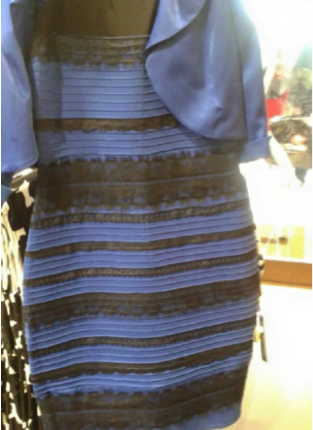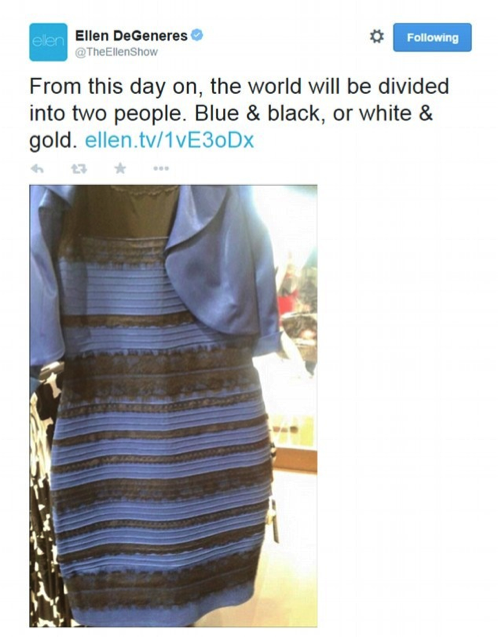Why #TheDress is still (sort of) relevant
Blue and black, or white and gold?
If you’re a functioning human with access to the Internet and basically any form of social media profile, you probably know what that means. Last Thursday, Feb. 26, people across the world fiercely debated the color of a dress in a picture that originated on Tumblr. Classes were delayed so students and their professors could argue about it. Psychology lectures halted to discuss visual perception and top-down processing. Group text messages blew up with friends questioning one another’s competence. People questioned their own competence and sanity.
Quite simply, a poorly lit photograph of an article of clothing broke the Internet more than Kim Kardashian ever will.
The great dress debate prompted mixed reactions. Celebrities tweeted, passionately defending the color scheme that they saw even though many, like Taylor Swift, acknowledged that they didn’t quite understand why it was so important. (But then again, who did?)
In classic Tumblr fashion, many sarcastic photo edits were made mocking the members of the opposite “team” (the teams being “team black and blue” and “team white and gold”).
So why did people care so much? Of course the dress itself isn’t important. Actual pictures of the dress surfaced revealing that it is, in fact, blue and black. And with that the global buzz more or less fizzled out. A week later people still joke about it and Ellen DeGeneres gave the people who took the original photo peace-making half blue and black and half white and gold Ellen underwear so that everyone could be right. And with that, nobody really cared anymore.
Though the whole debate is basically the definition of a first world problem and a time waster, the fact that #TheDress was tweeted over a million times is remarkable. It goes to show that while people are usually reluctant to have conversations about hard-hitting issues via social media, they are eager to engage in global conversations (friendly reminder that millions of people argued over the color of a dress…). While people are scared that they may get facts wrong or may face public disapproval when voicing opinions about pressing political or social issues, they long to share and connect when the stakes are lower and content is more trivial. Social media is so pervasive in our culture that the millennials who’ve grown up with it have been conditioned to spread content and share their opinions online. This explains why our parents wondered why we cared so much about the color of a dress, whereas our generation felt it was of the utmost importance to find out whether our friends saw blue and black or white and gold.

No matter which colors you saw, perhaps think twice about the relevance of the things that pop up on your Tumblr dashboard or your Facebook newsfeed. That’s not to say that you should stop paying attention to and spreading cat videos and pictures of dresses with controversial color schemes. But perhaps consider using the power of your voice and whatever platform you’re using for slightly more important things too.






